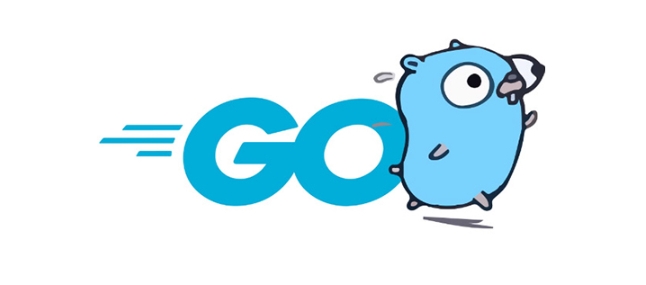Commonly used A/B testing frameworks and methods in Go language include: 1. Built-in logic to achieve simple diversion, suitable for small projects or MVP stages, and allocate groups through user ID hashing, which is lightweight and controllable but lacks a management interface; 2. Use open source libraries such as abtest, which supports JSON configuration, multi-experiment parallelism and flexible diversion methods, which are suitable for rapid construction; 3. Self-built A/B testing services, suitable for medium and large projects, including configuration management interfaces, stable diversion algorithms and data recording functions, with strong flexibility but attention to cache, logs and diversion stability. The choice of the plan should be determined based on the project size and needs.

If you want to know which Go A/B testing frameworks are useful, there are actually not many options on the market, but there are several that are enough to meet common needs. The Go language itself has strong performance and good concurrency processing capabilities, and is suitable for A/B testing services in high concurrency scenarios. However, most of the time, the logic of A/B testing is not complicated, the key lies in ease of use, scalability and data tracking capabilities.

Here are some solutions and suggestions that may be used in actual development:
Built-in logic to achieve simple shunt
If your application does not require too complex experimental configuration, it is enough to write a simple shunt logic in the code. For example, it is hashed and modulused according to the user ID and allocated to different groups.

func AssignGroup(userID string, groups []string) string {
hash := fnv.New32a()
hash.Write([]byte(userID))
return groups[hash.Sum32() % uint32(len(groups))]
}The advantage of this approach is that it is lightweight and controllable, especially suitable for use in the initial stages or internal systems. The disadvantage is that there is no unified management interface, and modifying grouping rules requires changing the code and redeployment.
Applicable scenarios:

- Small project or MVP stage
- There are not many experiments and not long periods
- No frequent policy changes are required
Use open source libraries for basic support
Although there is no mature A/B test platform like the front-end, there are some Go open source libraries that can help you organize experimental logic more easily. For example, the abtest library provides some basic configuration structure and selection logic, which is suitable for people who want to build quickly but don’t want to start from scratch.
Its characteristics are:
- Support JSON configuration experimental rules
- Multiple experiments can be defined to run in parallel
- Flexible diversion method (random, user ID hash, etc.)
You can embed it into your service, query the current user's experimental group through the HTTP interface, and then decide which version of the content to display.
Recommended usage:
- Centrally manage configuration files to avoid hard-coded
- Cooperate with logs to record user experimental grouping for easier subsequent analysis
- If grayscale release is required, this mechanism can also be reused
Self-built A/B testing services are more flexible
For medium and large projects, it would be more appropriate to build an A/B test service on your own. You can build an independent service based on Go, responsible for receiving user information, returning to experimental groups, and recording exposure events.
This service can include:
- Experimental configuration management interface (add, delete, adjust traffic)
- User diversion algorithm (by user attributes, device type, etc.)
- Exposure and reporting
- Simple background page to view the current experiment status
This architecture is more flexible and easier to connect to data analysis systems. If you already have a data warehouse or BI platform, you can import the experimental data into unified analysis.
Notes:
- Consider caching configuration to reduce database pressure
- The shunt logic must be stable and cannot change with time to affect the experimental results.
- Log records must be complete, otherwise it will be troublesome to check problems later.
Basically that's it. The key to Go A/B testing is not how powerful the framework is, but what you need to be clear about: temporary testing, long-term operation experiments, or to build a general platform. When choosing the right method, you should pay more attention to the areas that are not complicated but are easy to ignore, such as whether the diversion is uniform and whether the log is accurate.
The above is the detailed content of Go A/B Testing Frameworks. For more information, please follow other related articles on the PHP Chinese website!

Hot AI Tools

Undress AI Tool
Undress images for free

Undresser.AI Undress
AI-powered app for creating realistic nude photos

AI Clothes Remover
Online AI tool for removing clothes from photos.

Clothoff.io
AI clothes remover

Video Face Swap
Swap faces in any video effortlessly with our completely free AI face swap tool!

Hot Article

Hot Tools

Notepad++7.3.1
Easy-to-use and free code editor

SublimeText3 Chinese version
Chinese version, very easy to use

Zend Studio 13.0.1
Powerful PHP integrated development environment

Dreamweaver CS6
Visual web development tools

SublimeText3 Mac version
God-level code editing software (SublimeText3)
 Is golang frontend or backend
Jul 08, 2025 am 01:44 AM
Is golang frontend or backend
Jul 08, 2025 am 01:44 AM
Golang is mainly used for back-end development, but it can also play an indirect role in the front-end field. Its design goals focus on high-performance, concurrent processing and system-level programming, and are suitable for building back-end applications such as API servers, microservices, distributed systems, database operations and CLI tools. Although Golang is not the mainstream language for web front-end, it can be compiled into JavaScript through GopherJS, run on WebAssembly through TinyGo, or generate HTML pages with a template engine to participate in front-end development. However, modern front-end development still needs to rely on JavaScript/TypeScript and its ecosystem. Therefore, Golang is more suitable for the technology stack selection with high-performance backend as the core.
 How to build a GraphQL API in golang
Jul 08, 2025 am 01:03 AM
How to build a GraphQL API in golang
Jul 08, 2025 am 01:03 AM
To build a GraphQLAPI in Go, it is recommended to use the gqlgen library to improve development efficiency. 1. First select the appropriate library, such as gqlgen, which supports automatic code generation based on schema; 2. Then define GraphQLschema, describe the API structure and query portal, such as defining Post types and query methods; 3. Then initialize the project and generate basic code to implement business logic in resolver; 4. Finally, connect GraphQLhandler to HTTPserver and test the API through the built-in Playground. Notes include field naming specifications, error handling, performance optimization and security settings to ensure project maintenance
 How to install Go
Jul 09, 2025 am 02:37 AM
How to install Go
Jul 09, 2025 am 02:37 AM
The key to installing Go is to select the correct version, configure environment variables, and verify the installation. 1. Go to the official website to download the installation package of the corresponding system. Windows uses .msi files, macOS uses .pkg files, Linux uses .tar.gz files and unzip them to /usr/local directory; 2. Configure environment variables, edit ~/.bashrc or ~/.zshrc in Linux/macOS to add PATH and GOPATH, and Windows set PATH to Go in the system properties; 3. Use the government command to verify the installation, and run the test program hello.go to confirm that the compilation and execution are normal. PATH settings and loops throughout the process
 Go sync.WaitGroup example
Jul 09, 2025 am 01:48 AM
Go sync.WaitGroup example
Jul 09, 2025 am 01:48 AM
sync.WaitGroup is used to wait for a group of goroutines to complete the task. Its core is to work together through three methods: Add, Done, and Wait. 1.Add(n) Set the number of goroutines to wait; 2.Done() is called at the end of each goroutine, and the count is reduced by one; 3.Wait() blocks the main coroutine until all tasks are completed. When using it, please note: Add should be called outside the goroutine, avoid duplicate Wait, and be sure to ensure that Don is called. It is recommended to use it with defer. It is common in concurrent crawling of web pages, batch data processing and other scenarios, and can effectively control the concurrency process.
 Go embed package tutorial
Jul 09, 2025 am 02:46 AM
Go embed package tutorial
Jul 09, 2025 am 02:46 AM
Using Go's embed package can easily embed static resources into binary, suitable for web services to package HTML, CSS, pictures and other files. 1. Declare the embedded resource to add //go:embed comment before the variable, such as embedding a single file hello.txt; 2. It can be embedded in the entire directory such as static/*, and realize multi-file packaging through embed.FS; 3. It is recommended to switch the disk loading mode through buildtag or environment variables to improve efficiency; 4. Pay attention to path accuracy, file size limitations and read-only characteristics of embedded resources. Rational use of embed can simplify deployment and optimize project structure.
 Go for Audio/Video Processing
Jul 20, 2025 am 04:14 AM
Go for Audio/Video Processing
Jul 20, 2025 am 04:14 AM
The core of audio and video processing lies in understanding the basic process and optimization methods. 1. The basic process includes acquisition, encoding, transmission, decoding and playback, and each link has technical difficulties; 2. Common problems such as audio and video aberration, lag delay, sound noise, blurred picture, etc. can be solved through synchronous adjustment, coding optimization, noise reduction module, parameter adjustment, etc.; 3. It is recommended to use FFmpeg, OpenCV, WebRTC, GStreamer and other tools to achieve functions; 4. In terms of performance management, we should pay attention to hardware acceleration, reasonable setting of resolution frame rates, control concurrency and memory leakage problems. Mastering these key points will help improve development efficiency and user experience.
 How to build a web server in Go
Jul 15, 2025 am 03:05 AM
How to build a web server in Go
Jul 15, 2025 am 03:05 AM
It is not difficult to build a web server written in Go. The core lies in using the net/http package to implement basic services. 1. Use net/http to start the simplest server: register processing functions and listen to ports through a few lines of code; 2. Routing management: Use ServeMux to organize multiple interface paths for easy structured management; 3. Common practices: group routing by functional modules, and use third-party libraries to support complex matching; 4. Static file service: provide HTML, CSS and JS files through http.FileServer; 5. Performance and security: enable HTTPS, limit the size of the request body, and set timeout to improve security and performance. After mastering these key points, it will be easier to expand functionality.
 Go select with default case
Jul 14, 2025 am 02:54 AM
Go select with default case
Jul 14, 2025 am 02:54 AM
The purpose of select plus default is to allow select to perform default behavior when no other branches are ready to avoid program blocking. 1. When receiving data from the channel without blocking, if the channel is empty, it will directly enter the default branch; 2. In combination with time. After or ticker, try to send data regularly. If the channel is full, it will not block and skip; 3. Prevent deadlocks, avoid program stuck when uncertain whether the channel is closed; when using it, please note that the default branch will be executed immediately and cannot be abused, and default and case are mutually exclusive and will not be executed at the same time.






